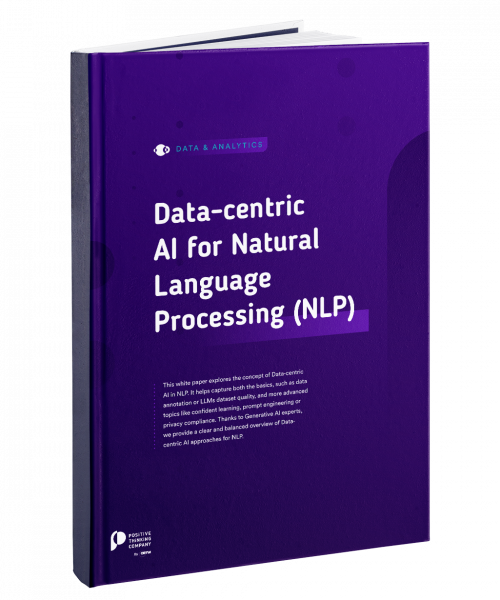To move toward a data-driven culture means to give your company the ability to adapt its organization and the decision-making processes in order to capitalize as much as possible on data intelligence. It is thus not enough to only deploy self-service analytics tools or to use some IoTs: the approach requires a deeper change of mindset. Explanations.
The term of “data-driven” refers to all the processes that enable the management of an activity through the extensive use of data. This is obviously not a new concept: companies did not wait for the rise of cloud technologies to set up data warehouses and tools to manipulate data or design dashboards useful to the business. Since the early ‘90s and the introduction of the first “Executive Information Systems”, technologies have evolved significantly. The purpose remains however the same: data is always used to improve decision making. If the purpose remains the same, why then are we talking about data-driven culture? Because this concept is the result of a combination of two joint phenomena: unprecedented data volumes and analytics capabilities. Big Data and Machine/Deep Learning unleashed the potential of voluminous and unstructured data sources that were completely unavailable to computer processing.
On the way to accessible and actionable data through automation
At the same time, organizations are facing more structural changes, driven by the need to become more agile in order to maintain their competitiveness. The traditional pyramid model is gradually giving way to more flexible organizations, with operational workers becoming increasingly autonomous in terms of decision-making.
Therefore, adopting a data-driven culture means making the most of the convergence of these two trends (Big Data and Machine/Deep Learning). Without limiting the specific challenges each company faces, the approach is based on three main areas:
- Developing accessibility. It consists in giving business users access to data. It is of course considered within the framework of an appropriate governance.
- The data must then be actionable, i. e. relevant to business goals and implies, in particular, going beyond the most obvious KPIs.
- Finally, automation is used to speed up the time from the collection to the interpretation of the data.
The data-driven culture extends to all industries
The efficiency of the approach has been proven in a wide range of sectors. For example, most e-commerce retailers now use automated recommendation systems that are managed directly by sales teams, what is often referred to as data-driven marketing.
Once aware of the data challenges, businesses are likely to identify the actionable information on their own. For instance, by combining different data sources, a winter clothing manufacturer has succeeded in highlighting a link between his sales curves and the weather in a given geographical area. Thanks to this knowledge, a very simple one, he was able to optimize both advertising investments and inventory management.
In the industry, the national state-owned railway company, SNCF, uses a data-driven approach for all predictive maintenance projects. For example, they are developing a connected sensor, that is using IoT paradigm, to measure the variation of temperature on the tracks so as to foresee a potential dilatation of the rails which could lead to an interruption of the service.
Similar logic is utilized in the world of insurance where data is cross-referenced and analyzed to automatically prevent fraud risks.
All studies have been in agreement for years to recognize the merits of data-driven management. At the end of 2016, McKinsey Global Institute provided striking figures: companies that have successfully adopted a data-driven approach are twenty-three times more likely to attract new customers, six times more likely to retain them and nineteen times more likely to make profits at the end of their journey!
The same year, a Forrester survey pointed out that 74% of companies do want to transition to a data-driven business, but only 29% of them are able to actually link their decision-making process to their analytics tools. This was still true in 2019 : a survey conducted by NewVantage Partners among senior executives of large American companies revealed that 72% of them believe they have not yet succeeded in forging a true data-driven culture within their company.
Implementation requires a real company project
A company culture means a company project: to become data-driven, the organization must learn to break down silos in order to spread information more widely and increase the ability of each person to produce knowledge that will benefit to everyone. It is a project of transformation that affects the very structure of the company. As a result, it must be supported by leading sponsors. The involvement of managers is particularly important as the main barrier to success is human, not technical. Resistance to change is the most common reason for not changing mindsets. The support of the whole hierarchy tree and its branches is therefore the essential condition for progress on the road to a data-driven company. As soon as it is achieved, the company can start working to leverage its data and improve its decision-making.










